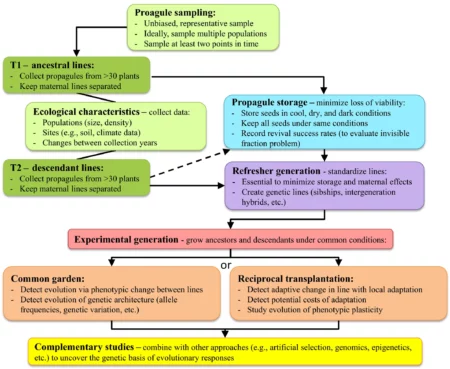- New Zealand supports SPC regional crops and trees genebank in a big way.
- Some of those trees are wild species that contribute to food security, and more must be done to conserve them.
- Some trees are crops of course, like mangoes, and scientists are doing their bit for them in the Philippines.
- Wait, isn’t it too early for the usual BBC saving-the-apple story? Usually comes in the autumn.
- Who needs genebanks when you can inscribe landraces in a National Inventory of Intangible Cultural Heritage.
- Maybe try it with fonio next?
- Or just send seeds into space?
- Maybe including macadamia, or is space not cold enough for them?
Nibbles: Animal genebanks, Wild pigeon, Uganda genebank, Biodiversity value, W African cooking, Indigenous cafes, Climate crisis & food, Reforestation
- FAO webinar series on animal genebanks.
- Quick put this wild pigeon in a genebank before it’s too late. No, really.
- Yeah but how much is a wild pigeon worth?
- Maybe if you could cook it, it might be worth more? No, really, I’m serious.
- Would be terrible to have a wild pigeon shortage.
- In fact, we need to be able to re-pigeon.
Returning to recollecting
We’ve referred to Project Baseline here a couple of times, but always somewhat desultorily. But I think that needs to end now that the project hit the big time with a shoutout in Gizmodo.
Based at the University of Minnesota Duluth, Project Baseline re-collects seeds multiple times from the same sites to see how populations change genetically and phenotypically.
In the Resurrection Approach, dormant ancestors are reared in a common garden with contemporary descendants. The Project Baseline collections are designed to maintain the genetic structure of populations to facilitate researchers utilizing the resurrection approach. Seeds are collected and stored separately by maternal plant from up to 200 individuals per population. After collection, seeds were cleaned and [conserved] at the NLGRP.
That phrase “reared in a common garden” is doing a lot of work, as the flowchart in a 2017 paper describing the Resurrection Approach shows.

Turns out we blogged about this too, almost 15 years ago, though there didn’t seem to be a Project Baseline yet at the time. I was maybe a bit hard on that press release, but more because of the misconceptions about genebanks that it revealed rather than the concept of re-collecting from the same site or population to monitor genetic change. That of course is extremely valuable, as our recent review of genetic erosion showed.
I see your podcasts, and raise you a clutch of videos
Brainfood: Russian PGRFA, Afghanistan wheat, Nepal wheat, Food miles & emissions, Agroecology and nutrition, European ag transition, Agrobiodiversity index, Sicilian durum, Indian fruits, Wild apples, Cider,
- Genetic resources in Russia: from collections to bioresource centers. Ok, but why can’t they be both?
- Sowing the wheat seeds of Afghanistan’s future. Breed, fortify, irrigate, rebuild the knowledge base, invest in seed systems, engage farmers, include women, have the right policies. And hope for the best. No sign of bioresource centers, alas.
- Variation in Grain Zinc and Iron Concentrations, Grain Yield and Associated Traits of Biofortified Bread Wheat Genotypes in Nepal. Maybe Nepal can help Afghanistan, wheat-wise?
- Global food-miles account for nearly 20% of total food-systems emissions. Not a worry for Afghanistan or Russia, I suspect.
- Can agroecology improve food security and nutrition? A review. Yes. Afghanistan and Russia to be alerted.
- The geography of megatrends affecting European agriculture. Climate change, demographic change, (post-) productivism, and increasingly stringent environmental regulations mainly work together to destabilize the current system. Russia unavailable for comment.
- Agrobiodiversity Index Report 2021: Assessing Mediterranean food systems. Conservation of agricultural biodiversity doesn’t automatically translate into diversity in diets. I’d like to see the data for Russia and Afghanistan.
- Intra- and Inter-Population Genetic Diversity of “Russello” and “Timilia” Landraces from Sicily: A Proxy towards the Identification of Favorable Alleles in Durum Wheat. Lots of interesting variation in Sicilian wheat landraces. Now to get Sicilians to eat more diverse pasta.
- Global interdependence for fruit genetic resources: status and challenges in India. Maybe India could help Afghanistan. And vice versa. Wouldn’t that be a thing. Meanwhile, no word on the diversity of Indian fruit consumption.
- Wild Apples Are Not That Wild: Conservation Status and Potential Threats of Malus sieversii in the Mountains of Central Asia Biodiversity Hotspot. Climate change is coming for wild apples, and there’s only so much that protected areas can do. I believe Russia knows a thing or two about apple genebanks.
- Cider and dessert apples: What is the difference? Not much, as it turns out. But all I can think of now is wild apple cider.